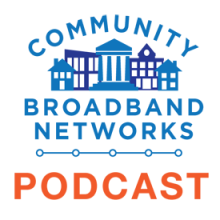Sonic Suggests Dark Fiber for Munis - Community Broadband Bits Podcast 261

Sonic is one of the best ISPs in the nation - well beloved by its California subscribers and policy geeks like us in part because of its CEO and Co-Founder, Dane Jasper. Dane combines a tremendous amount of technical and business knowledge in a thoughtful and friendly personality. And while we don't always agree, we are always interested in what he is thinking about.
Dane joins us for Community Broadband Bits episode 261, where we focus on how cities can invest in infrastructure that will both allow firms like Sonic to thrive and permanently break any concerns about a monopoly over Internet access. Dane encourages cities to focus on dark infrastructure -- conduits or dark fiber that allow ISPs more freedom to pick and perhaps change the technologies they want to deploy services.
We also talk about network neutrality and a very brief history of Sonic.
Additionally worth noting, Sonic gets five stars from the "Who Has Your Back" evaluation from the Electronic Frontier Foundation.
This show is 35 minutes long and can be played on this page or via Apple Podcasts or the tool of your choice using this feed.
Transcript below.
We want your feedback and suggestions for the show-please e-mail us or leave a comment below.
Listen to other episodes here or view all episodes in our index. See other podcasts from the Institute for Local Self-Reliance here.
Thanks to Arne Huseby for the music. The song is Warm Duck Shuffle and is licensed under a Creative Commons Attribution (3.0) license.



